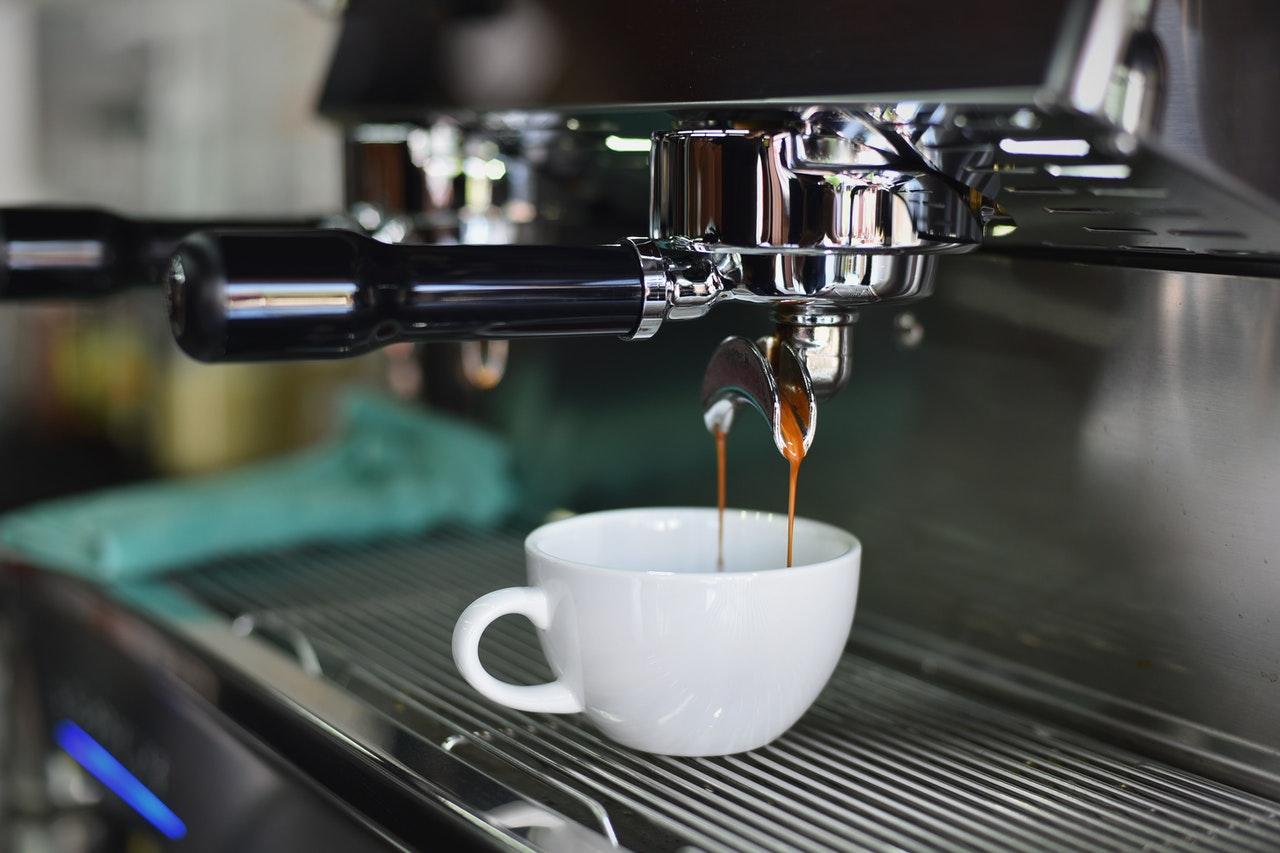
Espresso is powerful black espresso i.e., no dairy introduced—that has a unique brewing method. Espresso is made by forcing steam via finely-floor espresso beans. Like ordinary drip espresso, it may be crafted from any sort of espresso bean, alevin though usually a mix is used to create surest flavors. Regular drip espresso a.k.a., filtered espresso or pour-over — is made through pouring water over greater coarsely-floor, roasted espresso beans in a clear-out.
Brewing Methods
To be made into espresso, the entire espresso bean ought to be on the floor. Most floor espresso is for brewing in a domestic coffeemaker. In automated drip systems, the beans are floor to a medium coarseness. Hot water drips onto the floor espresso and extracts its essence via a clear out. The grounds are discarded after use. Coffee also can be boiled or positioned in a percolator for brewing, and several different brewing techniques exist, consisting of unmarried-serve espresso systems, like the Keurig, Tassimo, and Nespresso. Some brewing techniques, which include the usage of a French press, don’t clear out the espresso via paper, as an alternative permitting the espresso to preserve its herbal oils and plenty of its herbal frame.
Espresso is a change brewing method. Very warm water below strain is pressured via finely-floor, compacted espresso for 20-30 seconds. The result is a beverage this is thicker than everyday espresso. Also, froth is fashioned on the pinnacle of the beverage. This froth is called crema. The crema is the result of emulsifying the oils withinside the espresso right into a colloid. Crema needs to be a darkish mahogany color, with small bubbles of fuel line launched at some stage in brewing. The presence of light-colored spots withinside the crema indicates the pull (a time period used for making coffee because of the primary espresso machines counting on the barista to drag down a spring-loaded lever that managed the strain of extraction) went on too long, and the absence of crema shows both a poorly-brewed shot or that the espresso beans misplaced their sugar and fats at some stage in processing.
Serving Size
The common serving length of a cup of espresso is eight ounces, and the standard coffee serving length is one ounce. Often, coffee might be introduced to espresso in photographs. It isn't unusual to feature up to a few or 4 photographs of coffee to a cup of espresso, and coffee is the bottom for drinks that include lattes, cappuccinos, Americanos, and mocha cafes. Of course, coffee can also be inebriated by myself without blending it into espresso or with milk.
The famous chain Starbucks offers drip espresso in 5 sizes and coffee in two. Drip espresso may be bought in Short (eight oz.), Tall (12 oz.), Grande (sixteen oz.), Venti (20 oz.), and Trenta (31 oz.). Espresso is to be had in Solo (1 oz.), and Doppio (2 oz.). In Europe, coffee is common to be had in 4 sizes: Ristretto (3/four oz.), Single Shot (1 oz.), Lungo (1½ oz.), and Double Shot (2 oz.).
Caffeine Content
Depending on the brew, a cup of espresso consists of 80-185mg of caffeine according to the regular 8oz serving. A 2oz. serving of coffee consists of 60-100mg of caffeine. Per ounce, coffee consists of greater caffeine — 30-50mg/oz. as compared to espresso’s eight-15mg/oz. However, as coffee is normally fed on in a serving length of 2oz. or much less, an unmarried serving of espresso usually promises greater caffeine than an unmarried serving of coffee.
Flavor
Espresso is mostly a mixture of various beans imparting a subdued acidity, heavy frame, and candy stability to any sour flavors. Drip espresso tends to lack the overall variety of flavors and oils gift withinside the espresso beans because the paper clear out filters out some of the herbal oils, and the longer brewing time can also additionally permit phytic and tannic acids which mask the proper flavors to develop.
Over-extracted coffee or coffee made the usage of over-roasted beans is possible to flavor excessively sour, however, well-made coffee needs to not. Complex nutty, fruity, salty, and candy flavors need to as an alternative be discernible.
Body
The frame of the espresso is its bodily properties – the way it feels withinside the mouth. It may be oily, watery, or grainy; light, thin, medium, or complete. An espresso’s weight and consistency affect its frame. The clear-out utilized in drip espresso gets rid of many taste oils and produces a lighter frame, even as coffee tends to have a fuller frame, as crucial oils remain.
Aroma
The aroma of espresso is unstable and is a sturdy indication of the general taste. Smoky, herbal, nutty, fruity, and complicated notes can be discernible. Neither drip espresso nor coffee needs to ever odor burnt – this usually factors to an incorrectly organized beverage.
Bitterness
The bitterness, tasted behind the mouth, is to a point proper in espresso, however is mainly proper for coffee preparations. Robusta beans produce a greater sour taste than arabica beans, and well-balanced bitterness guarantees a complete taste. The sweetness of espresso can normally be tasted on the tip of the tongue and is moderate and smooth.
Acidity and pH Level
Coffee acidity isn't similar to its pH degree and shouldn’t be burdened with sour, ugly bitterness. It is, in fact, a ‘measurement’ primarily based totally entirely on flavor. High acidity is considered "bright," even as low acidity is regularly described as being "smooth," and acidity this is too low is visible as "flat." Combining sugar with espresso produces an acidity that will increase espresso’s sweetness, i.e., the flavor this is called acidity is sweetened.
Coffee commonly has a pH degree of 5 a touch much less acidic than tomato juice (four) and a touch greater acidic than milk (6). Phytic and tannic acids, which arise clearly in espresso beans, reason the sour, once in a while searing, impact withinside the mouth and belly this is from time-to-time termed acidity.
The acidity of a beverage relies upon the espresso bean used to provide the grounds and the brewing technique. Darker roasts tend to be much less acidic each in taste profile and pH degree. Cold brewing additionally produces a beverage with a decrease pH degree. The time of the extraction manner additionally impacts the quantity of phytic and tannic acids withinside the beverage. The shorter extraction length of coffee normally hinders those acids from seeping into the very last brew. An accurate manner to inform while the phytic and tannic acids have leached into the Best Espresso Machine Under 300 is while the rich, darkish tan color of the crema modifications to a lighter straw color.
Health
The verdict remains out on whether espresso is right or terrible for you. Both drip espresso and coffee comprise magnesium, calcium, and potassium. However, even as coffee gives 3 instances as lots magnesium in a one-ounce serving as espresso gives in an 8oz. serving, the standard serving of drip espresso promises better degrees of calcium and potassium.
Also read about:
10 Things The One Spy User Know About Their Teenagers Secret Life
How To Pack Like A Pro For Your Flights To India
Things to consider before buying any Skin Care Product










More Stories
Treat your kids with delightful and easy to prepare Bucatini Pasta
Excellent Guide To Making The Perfect Truffle Butter
Top 6 Indian Restaurants in al Karama Dubai You Must Try
How A Well Designed Chinese Food Boxes Promotes Your Business
Get The Best Cookware For Your Everyday Cooking
Mouth Watering Carrot Cake with Cream Cheese Frosting Recipe everyone should try